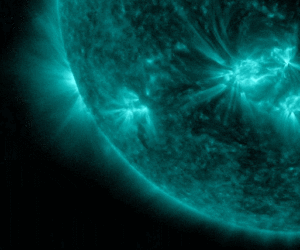

Strange Sounds – December 1, 2020
Well, if you look back at data from the past two days, there is a clear correlation between the proton density sent from the sun and the occurrence of large earthquakes (M > 5.6), with a time shift of 1-2 day(s).
The biggest solar flare in more than 3 years occured on Nov. 29th, triggering widespread radio shortwave outages and hurling a huge CME in space.
Luckily, the small sunspot that erupted wasn’t facing Earth during its explosive event. But still, particles from the solar eruption may have triggered a series of 4 strong earthquakes that hit across the world within less than 12 hours between Nov. 30th and Dec. 1st.
M6.4 Russia – Nov. 30th, 22:54:34 (UTC)
The first earthquake of the series is a very deep M6.4 quake that hit 88 km SSE of Sovetskaya Gavan’, Russia.
The offshore quake epicenter was situated at a depth of 587km (364.7 miles) and no tsunami was created.
M6.3 Argentina – Nov. 30th, 22:54:59 (UTC)
Just 20 seconds after the first strong quake of the series, another big blast rattled 76 km WSW of San Antonio de los Cobres, Argentina.
Although very deep (147.8 km or 91.8 miles), the quake was reported by at least 16 people, most reporting very small shaking.
It is worthwhile to report that a M5.9 earthquake (so a big one too!) hit about the same region on Sunday, Nov. 29th at 1:40 p.m. local time – the same day than the solar eruption.
M6.3 Alaska – Dec. 1st, 16:22:40 (UTC)
Finally a M6.3 earthquake hit offshore, 38 km (23.6 miles) ESE of Nikolski, Alaska at a depth of 23 km (14.3 miles).
Eight reports of shaking have already been published on the USGS homepage.

